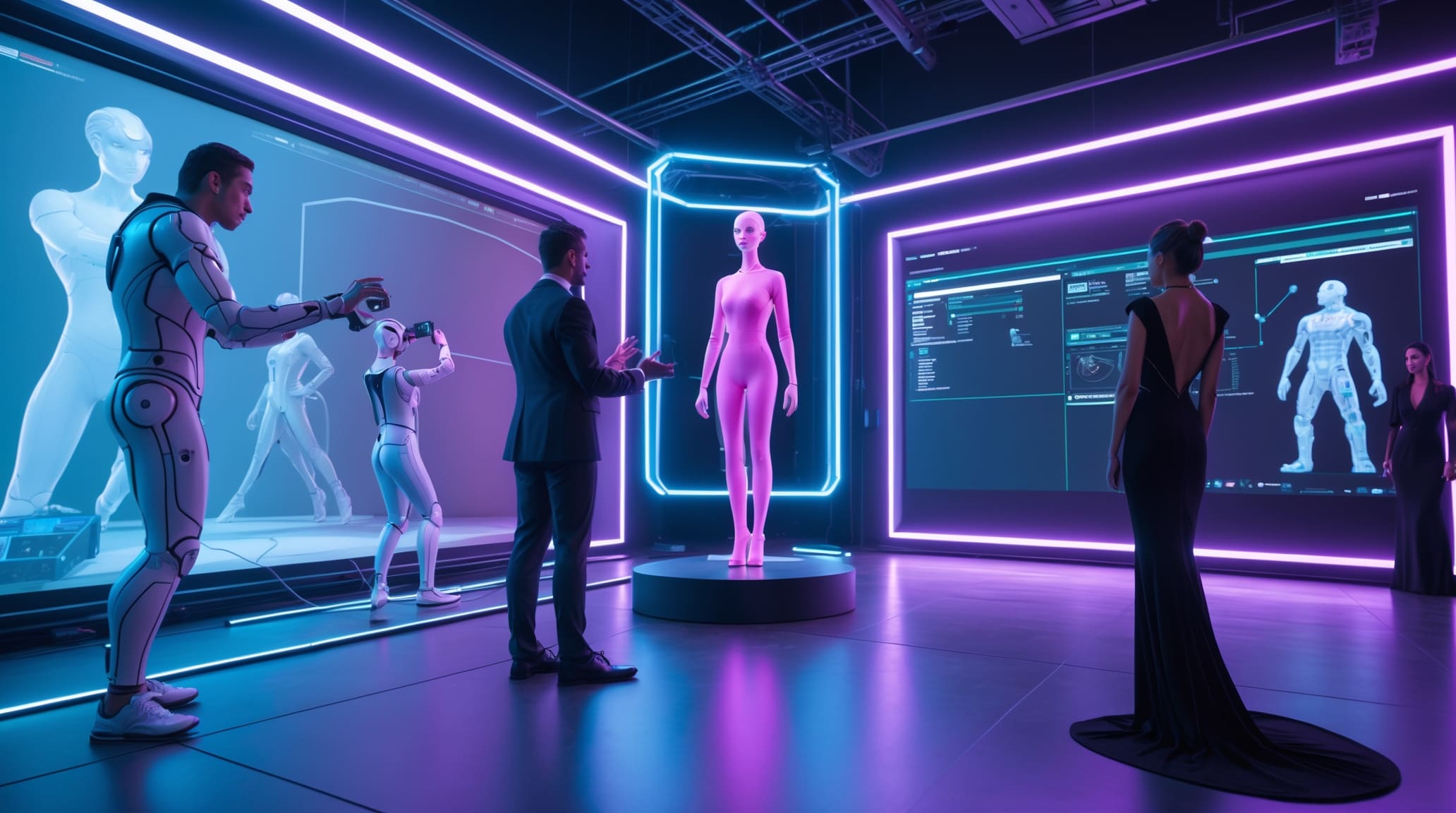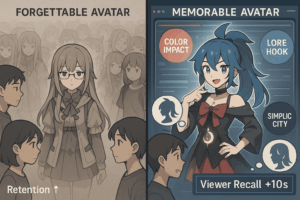3D animation has come a long way from its early days of simple digital models. It’s transforming industries like entertainment, gaming, healthcare, and marketing. With advancements in virtual reality, augmented reality, and motion capture, creators have more control over how they tell stories, fully immersing audiences in lifelike experiences.
In 2025, 3D animation is pushing boundaries with real-time rendering, AI-assisted workflows, and game engines that create highly detailed, real-world environments. From short films to interactive presentations, these innovations are reshaping how we interact with digital content.
Revolutionizing 3D Animation: Where Creativity Meets Technology?
Bringing characters, environments, and motion to life in 3D animation has never been more accessible. Advanced software and tools empower creators to produce stunning visuals for films, games, and digital campaigns with unprecedented ease and precision.
Motion capture and AI-driven image processing have redefined realism, making animated scenes more fluid and lifelike than ever. Meanwhile, the fusion of virtual and augmented reality is breaking boundaries, allowing audiences to step inside digital worlds and interact in ways that were once pure imagination. The future of animation is here—limitless, immersive, and driven by innovation.
How Virtual Reality is Reshaping Animation?
One of the most exciting advancements in 3D animation is its deep connection to virtual reality (VR). This technology goes beyond traditional screens, enabling users to step inside animated worlds and experience them firsthand.
✔ Fully immerse viewers in a digital universe. As technology advances, animation no longer stays behind a screen. Instead, users can step inside and explore worlds in real-time.
✔ Game engines generate dynamic real-time environments. With powerful rendering tools, scenes respond instantly to user actions. This creates more interactive and engaging experiences.
✔ Camera angles adapt to the user’s perspective for more natural storytelling. Unlike static shots, animations now shift based on viewer movement. As a result, storytelling feels more intuitive and lifelike.
A great example is animated VR films that transport audiences into new dimensions. Unlike traditional films, where scenes are displayed on a screen, VR animation allows the viewer to become part of the story, interacting with characters and objects in real-time.
Augmented Reality: Blending Digital with the Physical World
While VR takes users into a completely digital realm, augmented reality (AR) overlays digital elements onto the physical world. This technology is widely used in games, marketing, and industrial applications.
In 3D animation, AR enables creators to:
✔ Place animated characters into real-world environments. This creates a seamless blend of digital and physical spaces, enhancing storytelling and user engagement.
✔ Use mobile devices as cameras to display interactive scenes. With AR integration, users can experience animations in real time through their phone screens.
✔ Allow users to interact with digital content without special equipment. As a result, animation becomes more accessible, removing barriers to immersive experiences.
For instance, an AR-powered short film could allow viewers to watch characters move around their living rooms. Brands are also using AR to bring products to life, making shopping experiences more interactive and engaging.
Motion Capture: Bringing More Realism to Character Animation
One of the biggest challenges in 3D animation is replicating realistic movement. This is where motion capture technology plays a crucial role. By recording real actors’ movements, animators can create characters with realistic expressions, gestures, and body language.
This technique is widely used in:
✔ Short films and animated features. Moreover, motion capture enhances realism, making characters feel more lifelike.
✔ Video games with lifelike characters. As a result, players experience smoother animations and more immersive gameplay.
✔ Virtual influencers and digital humans. Consequently, brands can create engaging, interactive personas for marketing and entertainment.
With advanced computer vision and AI, motion capture is becoming more accessible to independent creators, allowing them to bring their characters to life with natural motion.
Game Engines: The Future of Real-Time Animation
Game engines like Unreal Engine and Unity are not just for gaming—they’re also shaping the future of 3D animation. These engines enable real-time rendering, allowing creators to see changes instantly rather than waiting for long rendering times.
Benefits of using game engines for animation:
✔ Faster production speed. With real-time rendering, animators can see instant results, reducing long wait times. As a result, projects are completed more efficiently than ever before.
✔ More control over scenes and angles. Game engines allow creators to tweak lighting, camera positions, and animations seamlessly. Consequently, every frame is fine-tuned for a polished final product.
✔ Ability to create immersive experiences with interactive elements. By integrating AR and VR, audiences can engage with animated worlds like never before. Therefore, storytelling becomes more dynamic and lifelike.
Many studios now use game engines to create animated films and videos, leveraging their powerful data processing and physics-based rendering capabilities.
The Role of AI in Image Processing and Animation
AI is transforming 3D animation, making the process faster, more efficient, and accessible to creators of all levels. With AI-driven image processing, animated scenes are becoming more realistic, featuring advanced lighting, detailed textures, and accurate physics simulations.
AI also enhances:
✔ Facial animation ensures expressive and lifelike characters, making digital interactions feel more natural. As a result, animated figures convey emotions with greater depth.
✔ Automated rigging simplifies the animation of complex models, reducing the time spent on tedious manual work. Consequently, creators can focus more on storytelling and design.
✔ Real-time animation adjustments adapt motion dynamically based on user input, enhancing interactive experiences. Therefore, animations respond instantly, creating a more immersive environment.
Beyond improving technical aspects, AI allows animators to focus more on creativity rather than time-consuming manual work. AI-powered tools in game engines and software can generate animations in real-time, making it easier to experiment with different styles, movements, and scenes. As AI continues to evolve, it will unlock new possibilities in storytelling, giving creators more control over how they bring characters and environments to life.
Telling Stories in a Fully Immersive Environment
The future of 3D animation is deeply connected to immersive storytelling, where virtual reality, augmented reality, and motion capture bring stories to life like never before. These technologies allow audiences to fully immerse themselves in digital worlds, turning passive viewing into active participation.
Examples of immersive storytelling include:
✔ VR short films where viewers become part of the story.
Step inside the narrative and interact with characters in real-time. VR transports audiences beyond the screen, making them active participants.
✔ AR-powered museum exhibits that blend history with interactive elements.
Watch historical figures come to life and artifacts reveal their stories. AR turns static displays into engaging, immersive learning experiences.
✔ Interactive video presentations that change based on user input.
Control the storyline and explore multiple outcomes with real-time choices. These videos adapt dynamically, creating a personalized experience.
By integrating real-world environments with digital experiences, creators have more control over how they tell stories, making them more engaging and dynamic. Whether it’s an animated game, film, or virtual experience, these innovations ensure that viewers don’t just watch—they interact, explore, and experience stories in entirely new ways, pushing the boundaries of animation and creativity.
The Future: Where 3D Animation is Headed?
As technology evolves, the line between the physical world and digital animation continues to blur. One major shift is the rise of web-based animation, allowing 3D content to be accessed directly through a browser without the need for heavy software. AI-generated models are also transforming the industry, enabling faster and more efficient model creation through advanced AI-powered tools.
Interactive storytelling is another exciting frontier, where animations adapt in real-time based on user input, creating immersive and personalized experiences. Additionally, real-world integration is becoming more seamless, blending animated content with real locations for enhanced visual storytelling. With continuous innovation, the future of 3D animation looks brighter than ever, unlocking new creative possibilities.
Conclusion
The future of 3D animation isn’t just about better visuals—it’s about redefining storytelling itself. With virtual and augmented reality, motion capture, and AI-driven tools, creators can craft experiences that respond, evolve, and immerse audiences like never before. Game engines and real-time rendering are shattering creative limits, making high-quality animation more dynamic and accessible. If you want to push beyond the ordinary and bring your vision to life, 3DAiLY delivers precision, speed, and affordability—30x faster than traditional workflows. The next era of animation is here. Are you ready to lead it? Let’s build something groundbreaking together!



